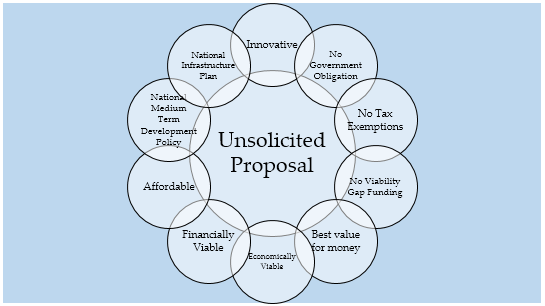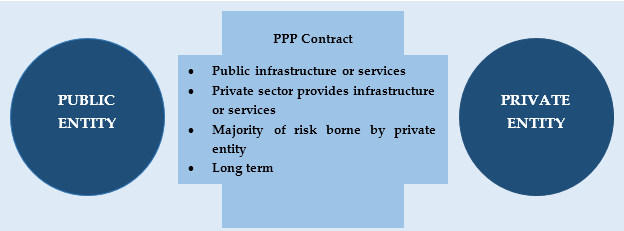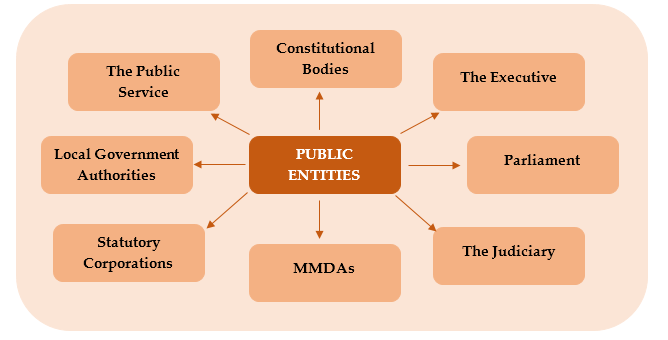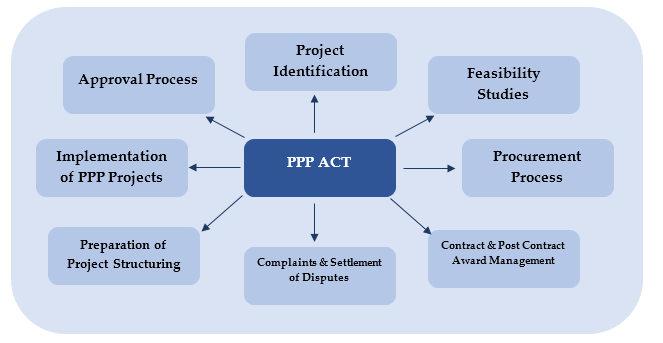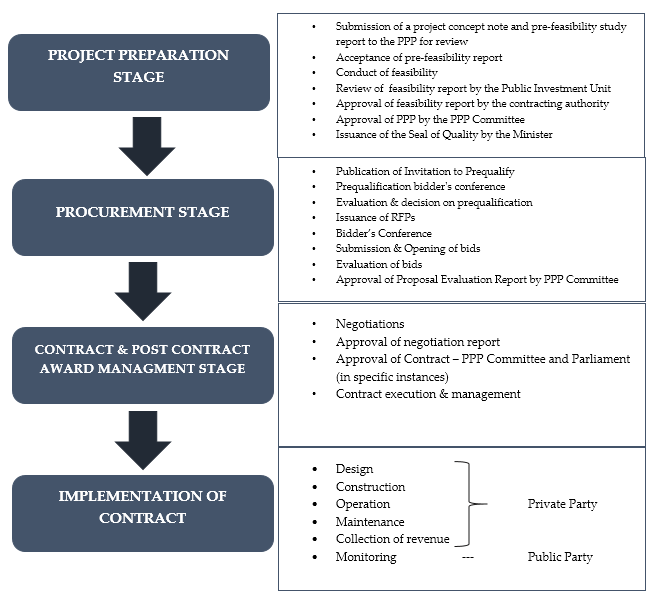There have been recent discussions or criticism of public entities in respect of award of contracts through sole source procurement. The loudest voice seem to suggest that the use of “sole” source procurement is “unethical”, “illegal” or at the least geared towards manipulation of the process in favour of a particular contractor, supplier or consultant. It was argued by a panelist on a radio discussion that a major reason for the spate and extent of judgment debts awarded against the state is due to the fact that such contracts are awarded through sole source procurement. In another discussion, a panelist suggested that a clear evidence of corruption in public entities is that about 80% of contracts awarded by public entities are done through sole source procurement. It must be pointed out that no evidence or basis for these assertions was provided for one to verify.
This article is intended to clear misconceptions created by these discussions on the use of sole source procurement. The article discusses:
- what is “sole” source procurement
- justification for sole source procurement
- procedure for sole source procurement
- approval required for sole source procurement
- the role of the procurement entity and the contractors, suppliers or consultant
It is important to emphasize at this stage that this article relates only to procurement under the scope of the Public Procurement Act, 2003 (Act 663) (the “Act”). Further, it should be clarified that even though the term “sole” source is commonly used, the terminology used under the Act is “single” source procurement. However, the article adopts the common term “sole source”.
What is Sole Source Procurement
The Public Procurement Act prescribes for a number of procurement methods for the procurement of goods, works and services. The Act makes competitive tendering the default procurement method for procurement by entities. Therefore, the use of any procurement method other than competitive tendering is subject to justification and approval. Competitive tendering may either be international or national competitive tendering.
The other methods of procurement that may be adopted subject to justification and approval are:
- Two-stage tendering
- Restricted tendering
- Single–source procurement
- Request for quotation.
Sole source procurement is, therefore, one of the methods of procurement provided for under the Act for the procurement of goods, works, and services. It is a method of procurement where goods, works or services are procured from a single source (without a competitive process).
The Act permits and provides for the use of sole source procurement subject to conditions or circumstances prescribed under the Act. The use of sole source procurement per se is, therefore, not illegal, and does not necessarily imply any unethical or corrupt activity on the part of the entity employing such method.
However, it is admitted that sole source procurement is more likely to be abused (in comparison to competitive procurement methods) because of the absence of competition. There are, however, measures provided under the Act to minimize the occurrence of such abuse. These safeguards are the prescription of:
- clear circumstances or criteria where the use of sole source is permitted.
- procedures to follow
- approval required for the use of sole source.
Criteria For The Use Of Sole Source Procurement
The Act prescribes seven (7) circumstances where an entity may employ the sole source procurement method. These are:
- Availability of goods, works or services from one source – an entity is permitted to engage in sole source procurement under this circumstance if two conditions are satisfied:
- The goods, works or services are available from only one particular supplier or contractor, or only one particular supplier or contractor has exclusive rights over the goods, works or services; and
- (There are no reasonable alternatives or substitutes available.
If these two conditions are satisfied, the entity is permitted under the Act to employ the sole source procurement method to procure the goods, works or services. Illustration: a public entity seeks to purchase decoders that broadcasts cartoon network for all nursery schools in Ghana. If the decoder is available from only one entity or only one entity has the exclusive right over the decoder with a cartoon network channel, then the first condition is satisfied. The second condition that must be satisfied is whether there are reasonable alternatives or substitutes to a decoder with cartoon network channel. In this case, if there is another supplier of decoders with channels that broadcast animated videos, (example; boomerang, cartoonito) then the question of the second condition must be considered. In that case what is reasonable alternative or substitute is a question of fact (not law) depending on each particular circumstance.
(2) Urgent Need of Goods, works or services – under this circumstance, three conditions must be satisfied:
- There must be a pressing need for the goods, works or services;
- The urgency must not be as a result of acts/omissions on the part of the entity; and
- The use of any other tendering process is not practicable due to unforeseen circumstances giving rise to the urgent need.
Illustration: where the Republic is sued in Court, and the Attorney-General’s Department has no capacity and intends to engage a private law firm to defend the country, that may qualify as urgent need for the services under this criterion.
(3) Urgent Need Due to Catastrophic Event – this circumstance is closely related to (2) above. However, under this circumstance, the following conditions must exist:
- There must be a catastrophic event;
- Due to that event, the goods, works or services are urgently needed;
- No other method of procurement can be employed due to the time involved in using those other methods.
The main difference between (2) and (3) above is that the circumstance under (3) is restricted to catastrophic events and there is no requirement as to whether the act/omission of the entity contributed to the urgency. This situation permits the procurement of goods, services, or works in the event of a disaster. Illustration: where there is a devastating flood that requires an urgent supply of necessaries to a community, that may be done under sole source procurement under this criterion.
(4) Continuity or Addition – this refers to a situation where the entity requires continuity or additional supply of the goods, or the performance of the works or services. Under this criterion, the entity after having procured goods, equipment, technology or services from a supplier or contractor may use sole source procurement to procure additional services, goods, technology or equipment in any of the following instances:
- where the entity determines that additional supplies need to be procured from that supplier or contractor because of standardization;
- where the entity determines that there is a need for compatibility with existing goods, equipment, technology or services, taking into account the effectiveness of the original procurement in meeting the needs of the entity;
- where the entity determines that the limited size of the proposed procurement in comparison with the original procurement justifies.
(5) Contract for Research, Experiment, Study or Development – where an entity intends to enter into a contract for research, experiment, study, or development, the entity may employ the sole source procurement method. However, the entity is not permitted to use a sole source procurement method where the contract for research, experiment, study, or development includes the production of goods in quantities to establish commercial viability or recover research and development costs. For example, the engagement of an expert to conduct research into the prevalence of buruli ulcers in a particular community.
(6) National Security- where the Act applies to procurement of goods, works or services that concern national security, the procurement entity may use sole source procurement where it determines that sole source procurement is the most appropriate method of procurement. The main factor under this circumstance is that the goods, works or services are of national security concern.
(7) Promotion of relevant national policy – an entity may use sole source procurement method where it is necessary to promote policies related to any of the following:
- Balance of payments position and foreign exchange reserves.
- Countertrade arrangements offered by suppliers or contractors.
- Local content
- Economic – development potential
- Encouragement of employment and reservation of certain production for domestic suppliers
- Transfer of technology
- Development of managerial, scientific and operational skills
Where sole source procurement is adopted to promote any of the above policies, the Act requires that there should be a public notice and time for comment prior to the entity procuring goods, works or services using sole source procurement.
The above circumstances are the instances where the Act permits the use of sole source procurement. The use of sole source procurement is, therefore, only permitted if one of the above circumstances exists. For that reason, it is advised, that a private entity seeking to secure a contract under a sole source procurement method satisfies itself of the existence of any of the above circumstances. Even though it is the responsibility of the procurement entity to ensure that one of the above circumstances exists, the private entity entering into such a contract must also ensure the Act is complied with. This is because of the general principle under Ghanaian law that a contract tainted by illegality may be set aside by the court or declared void.
Procedure For Sole Source Procurement
The Act provides that to use sole source procurement method, the entity must:
- Invite proposal from the service provider; or
- Request for quotation from the single contractor or supplier.
This implies that the entity must be satisfied with the proposal or quotation provided by the single service provider, or contractor or supplier respectively. This further implies that the proposal must be evaluated, and if required, there must be a negotiation with the supplier or contractor prior to execution of contract. In order to ensure these are done, the Public Procurement Authority (PPA) requires the entity to undertake a value for money assessment and ensure that the entity will get value for the money to be expended on the procurement of the goods, works or services.
The Guidelines issued by the Ministry of Finance and Economic Planning to guide the use of sole source procurement to procure goods, works or services requires institutions to provide information that satisfy the following:
- Capability and qualification of the proposed firm; and
- Conditions of contract and financial proposal.
On the capability and qualification of the proposed firm, the institution must provide detailed information and demonstrate that the proposed supplier, consultant or contractor possesses the required experience and capability to carry out the work. The information should include the following:
- Name of the proposed firm
- Professional and technical qualifications and competence
- Financial resources
- Equipment and other physical facilities
- Managerial capability, reliability, experience in the procurement object, and reputation
- The personnel to perform the procurement contract
- Evidence that the firm has the capacity to enter into the contract
- Evidence that the firm/entity is solvent, not in receivership, bankrupt or in the process of being wound up, does not have its business activities suspended or is not a subject of legal proceedings that would materially affect its capacity to enter into a contract.
- Evidence that the firm/entity has fulfilled its obligations to pay tax and social security contributions and paid compensation due for damage caused to property by pollution.
- The corporate entity has no director or officer who has in any country been;
- Convicted of any criminal offence relating to their professional conduct or making false statements or misrepresentations as to their qualifications to enter into a procurement contract within the last ten years; or
- Disqualified pursuant to administrative suspension or disbarment proceedings.
Even though the Guidelines require the evidence to be provided by the procurement entity to the PPA, it is for the entity, based on information made available by the supplier, contractor or consultant, to satisfy itself of the capability and qualification of the firm prior to submission of such evidence to the PPA for approval.
The submission of conditions of contract and financial proposal is to ensure cost effectiveness, and favorable contractual terms and conditions under the procurement contract. This requires that information is provided on:
- Detailed cost of the proposed procurement
- Demonstration that the proposed cost represents value for money. The Guidelines providethat this can be done by comparing the proposed cost with recent similar projects carried out through competition, or by comparing the proposed cost with available national and international standards.
Proposed draft terms and conditions of contract, which as much as possible must be consistent with agreed international terms.
The entity procuring under the sole source procurement method must therefore request for, obtain and evaluate the financial proposal of the supplier, contractor or consultant. The parties (procurement entity and supplier, contractor or consultant) must agree on the terms and conditions of contract which must be consistent with terms generally included in contracts of that nature. Above all, in the evaluation of the proposed cost, the procurement entity must undertake value for money assessment. A proper value for money assessment will ensure that the entity obtains the maximum value or benefit from the procured goods, works or services in comparison to the resources to be expended.
The essence of this procedure is to ensure that:
- The firm is qualified to perform the contract
- The firm has the capacity to enter and perform the contract
- The firm has the resources required to perform the contract
- The firm is in compliance with relevant laws
- The terms and conditions of the contract are favorable to the procurement entity.
- There is cost effectiveness and the use of sole source procurement does not result in higher cost than would have been incurred under other methods.
Approval
The PPA is established under the Act to ensure compliance with the Act. As part of its function, the PPA is to play the gateway–keeping function to ensure that sole source procurement is used in accordance with the Act. The use of sole source procurement method is therefore subject to the express approval of the PPA. It is in the light of this that the Guidelines issued on sole source procurement require the entity to submit information or evidence to the PPA on the following:
- Justification under the Act for use of sole source procurement method
- Capability and qualification of the proposed firm
- Conditions of contract and financial proposal
The PPA must therefore ensure that one of the circumstances described above exists to warrant the use of sole source procurement method. It must also ensure that the prescribed procedure is followed or has been followed. This involves evaluating the evidence submitted to ensure that the proposed firm is qualified and has the capacity to perform the procurement contract. In addition, the PPA must vet the financial proposal to ensure that it demonstrates value for money.
Conclusion
The use of the sole source procurement method is prescribed under the Act. Its use is subject to justifications prescribed and procedures stated under the Act as well as approval of the PPA. The use of such procurement method, in accordance with the Act, is not illegal or unethical and does not connote corrupt activity on the part of the entity employing the method.
However, like any other procurement method prescribed under the Act, the process may be abused. It is therefore important that all the relevant stakeholders, including the procurement entity, the contractor, supplier or consultant being engaged, the PPA, and the public at large, have an interest in ensuring the circumstances justify the use, the procedures prescribed under the Act are followed, and the relevant approval is obtained.
More importantly, it is for the private entity (contractor, consultant, or supplier) to ensure the use is justified, the procedure followed, and approval obtained since the procurement contract can be set aside for breach of the law. Procurement entities and private parties must therefore ensure the three (3) main criteria are satisfied and if necessary seek legal advice on the satisfaction to avoid abuse of the law.








